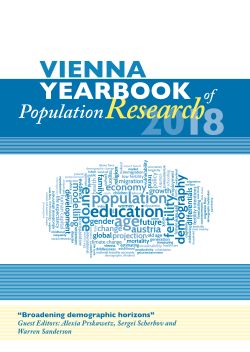
Vienna Yearbook of Population Research 2018, pp. 001-008, 2018/11/21
Broadening demographic horizons

This introduction to the 2018 special issue of the Vienna Yearbook of Population Research discusses the importance to broaden our demographic horizon by moving beyond age and gender in demographic models. By addressing population change also along dimensions such as place of residence, ethnicity/race, marital status, educational attainment, labour force participation and health status we can better capture the heterogeneity of population change. New methodologies have been developed to account for the multi-dimensionality of population models. The volume starts with a debate section that discusses such diverse topics as the principles of demography, the choice of the most plausible multiregional population forecast and the evolution of multi-dimensional demography. Seven research articles cover population heterogeneity in different demographic and economic contexts. These include the demographics of the Muslim population, the differential impact of pension reforms in Italy on socioeconomic groups and a study on economic dependency ratios for Austria taking into account the heterogenous population development by age, gender and education. Three papers are devoted to multistate population projections, the importance of causal approaches in population forecasts and probabilistic population forecasts. Another contribution highlights the importance of heterogeneity across individuals when studying the relation between birth intentions and outcomes. The volume ends with two contributions on data and trends that discuss world population projections by education and labour force status and the role of urbanization and education for the speed of the demographic transition.
Keywords: Population structure; Population projections; Multistate modelling; Labour force; Education; Demography; Population heterogeneity